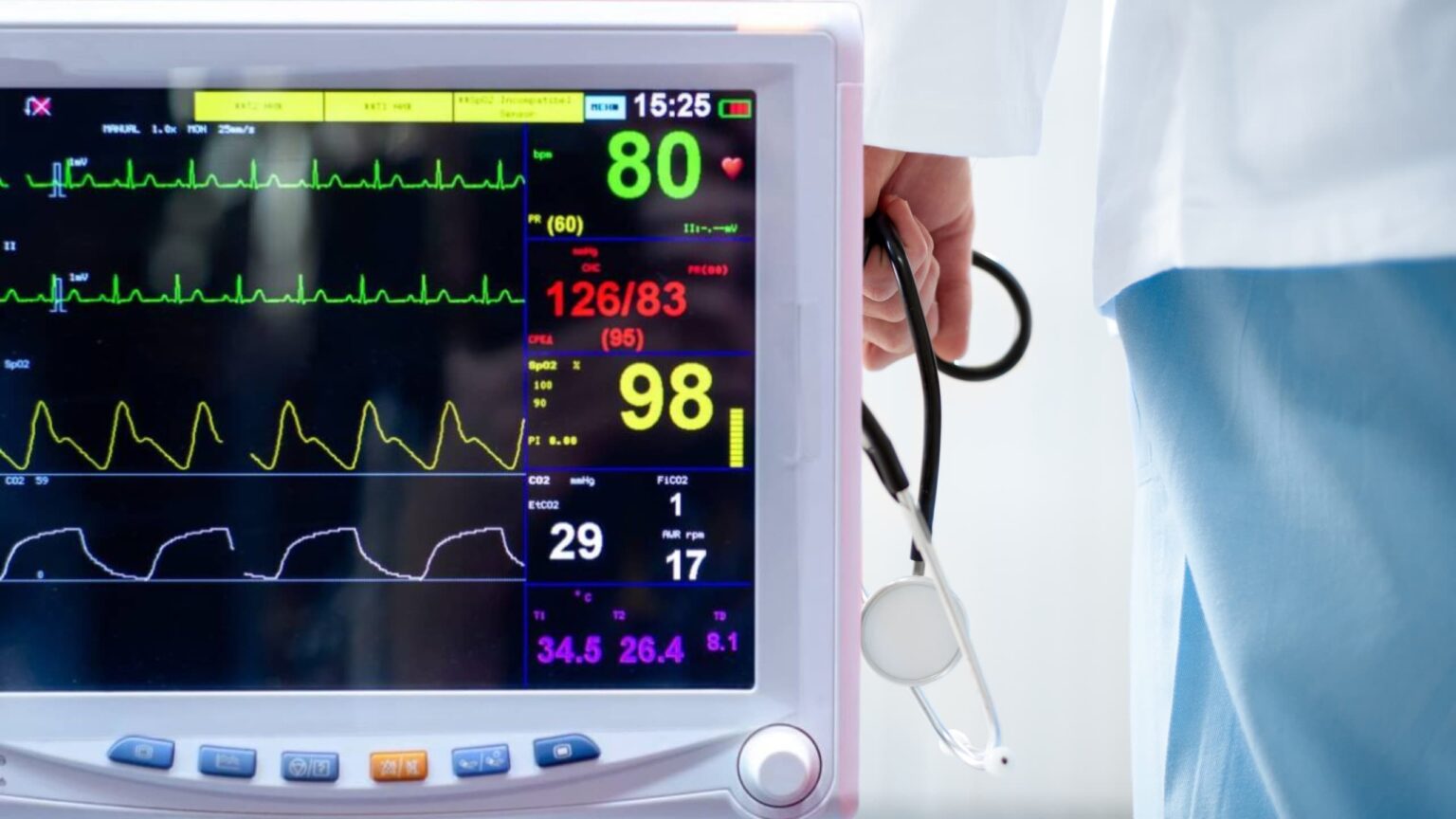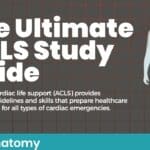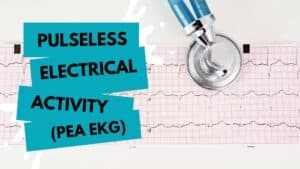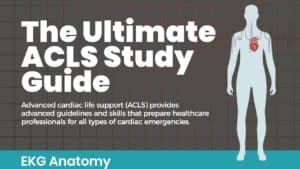Capnography may be the most important vital sign you use to monitor your EMS patient. It provides information about airway placement, tracks ventilation, and measures carbon dioxide during exhalation.
This feedback is invaluable in determining the severity of your patient’s condition and how well they respond to treatment. Healthcare workers, particularly those specializing in respiratory care, need to understand how these insights from capnography waveforms can help them manage their patient care.
The first step in caring for patients in cardiac arrest, respiratory distress, or shock is to keep your CPR certification up to date. An essential next step is learning what capnography is and how it can be used as an integral part of your EMS patient care.
Understanding Capnography and Its Relevance
Waveform capnography indicates how much CO₂ is present during each phase of the respiratory cycle, from inhalation to exhalation. It also displays respiratory rate. Capnography measures ventilation, rather than oxygenation. Ventilation encompasses the air movement both into and out of the lungs, while oxygenation lets you know how much oxygen is inhaled by the lungs and reaches the bloodstream.
Waveform capnography can also provide clues about the causes of respiratory distress. Since treating the wrong condition can cause more harm to the patient than benefit, learning how to read these clues on the capnograph can significantly impact your quality of patient care. Just like an ECG offers comprehensive information about the electrical conduction through the heart, capnography offers comprehensive information about how air is passing through the lungs to the rest of the body.
Insight 1: The Role of Waveforms in Monitoring Ventilation
Capnography waveforms reflect the amount of CO₂ in exhaled air, known as the end-tidal carbon dioxide or EtCO₂. That single number assesses the metabolism, ventilation, and perfusion of a patient when you know how to read the waveforms correctly. To accurately assess a capnography waveform, use PQRST:
- Proper – what the normal capnography should look like in a patient who has no metabolism, perfusion, or ventilation problems
- Quantity – the target EtCO₂ value is 35-45 mmHg
- Rate of ventilation – 12-20 breaths per minute (bpm) for adults breathing on their own, and 10-12 bpm when ventilating an adult
- Shape of the waveform – normal shape is a rectangle with rounded corners
- Trending – the Q,R, and S are stable or improving
You also need to know what each phase of the waveform represents to get a full picture of the patient’s ventilation. Inhalation is indicated by the dips in the waveform, which is typically at 0 since CO₂ doesn’t usually exit the lungs when a person is inhaling air.
The rise in the waveform begins at exhalation – CO₂ travels from the alveoli in the lungs to create a rapid rise in CO₂ levels. The plateau at the top of the waveform is the CO₂-rich gas that was in the alveoli, which is typically stable on a normal capnography waveform. The end of the plateau is where you have the EtCO₂ reading. At this point, inhalation begins again and there is a drop in the waveform.
Insight 2: Capnography in Assessing Respiratory Effort
Capnography provides information about respiratory effort based on the EtCO₂. When the lungs are performing normally, the brain responds to changes in CO₂ levels in the blood to maintain healthy ventilation. Visual clues to normal respiration include seeing the chest rise and fall and counting respirations to determine rate.
When a patient’s brain does not respond to CO₂ changes due to an injury, illness, or overdose, CO₂ can accumulate in the lungs. You may see a high EtCO₂ with a low respiratory rate, or a low EtCO₂ with inadequate respiratory rate and depth. Either of these situations could indicate an issue with CO₂ regulation and may require assisted ventilation to move CO₂ out of the lungs.
Your patient may have a normal pulse-ox reading and still be in respiratory distress due to an inability to eliminate CO₂. This is where a capnography reading is invaluable for rapid assessment and treatment.
Insight 3: Diagnosing Causes of Respiratory Distress
Just as diagnosing the cause of cardiac arrest is essential to patient outcomes, identifying the cause of respiratory distress is equally critical. Prompt treatment is generally required and incorrect treatment due to a wrong diagnosis can be harmful to your patient.
Different capnography waveforms can indicate conditions like cardiac arrest, shock, asthma, pulmonary embolism, and emphysema. You can quickly detect incidences of bronchospasm, hyperventilation, or respiratory failure. By understanding the PQRST of the waveform, you can rapidly assess possible causes for the respiratory distress and provide the appropriate treatment.
Insight 4: Monitoring Treatment Efficacy with Capnography
In addition to diagnosing causes of respiratory distress, capnography can let you know in real time how effectively a specific treatment is working. For example, a patient who receives albuterol for a symptom like wheezing may show the EtCO₂ stabilize if the treatment is working. If the treatment does not provide the desired effect, changes to the waveform help you identify the issue quickly so you can switch to a more effective treatment faster.
Capnography can also help you know how quickly to ventilate a patient and ensure proper advanced airway placement. It will let you know immediately if an airway device is dislodged or disconnected so you can take instant action. Using capnography with a bag valve mask also allows you to track whether the bag is getting squeezed correctly.
Insight 5: Capnography's Role in Detecting Shock
Capnography isn’t only useful in monitoring circulation in the lungs. It also offers clues about the circulation throughout the body. A decreasing EtCO₂ may indicate the early stages of hypotensive shock related to reduced cardiac output, which is the most effective time to begin treatment.
Capnography can also provide feedback on the effectiveness of chest compressions during cardiac arrest. The waveform can detect restored circulation, even before a pulse is detected in some cases. This makes capnography a critical tool not just in respiratory distress, but also during cardiac arrest and shock cases.
Capnography: An Essential Component of EMS Patient Care
Capnography offers valuable data to help you rapidly diagnose and treat patients in respiratory distress, as well as cardiac arrest and shock. The faster these patients get the appropriate treatment, the better their outcomes will be. Don’t wait to learn how to read a capnography waveform and be prepared to use this essential tool when assessing your EMS patients.
Begin or extend your certification training with SureFire CPR. Want to learn more about capnography or take your skills to the next level? We offer advanced training including ACLS certification and online EKG courses that will help you advance your career and raise the bar on your patient care and outcomes. All of our courses are taught by healthcare professionals who have used these skills in real-life scenarios. Our goal is to make training interesting and fun to increase your focus and retention after you receive your certification.
Courses are available online, in-person, and on-site throughout the Southern California area. Contact us today to get our current class schedule.











